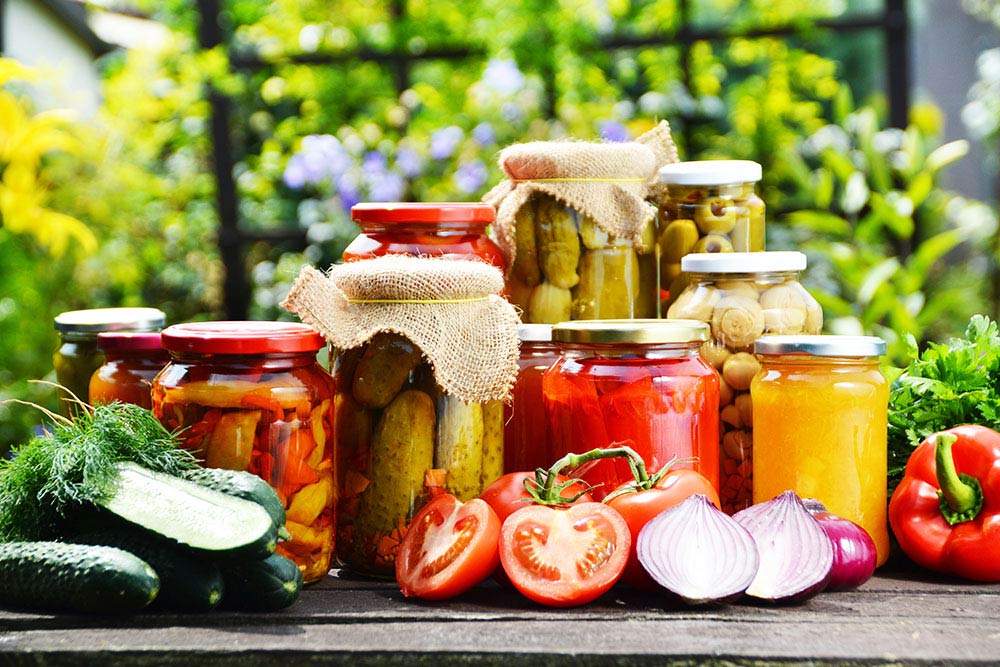Physical Address
304 North Cardinal St.
Dorchester Center, MA 02124
Physical Address
304 North Cardinal St.
Dorchester Center, MA 02124

Ancient methods shaping the future of food innovation
Human history is filled with inventive ways to preserve food long before refrigeration, vacuum sealing, and artificial preservatives came into play. Ancient cultures faced the need to keep harvests safe from spoilage and famine, often relying on ingenuity to extend the lifespan of their meals. Interestingly, these methods are not just relics of the past—modern food technology continues to draw from ancient preservation techniques, blending traditional wisdom with cutting-edge innovation. By revisiting how our ancestors stored, fermented, and protected food, today’s scientists and companies are developing more sustainable, healthier, and resilient systems for the future of food.
One of the earliest and simplest preservation tools was the clay pot. Civilizations across Mesopotamia, Egypt, and early India used earthenware to keep grains, oils, and water cool and safe from pests. The porous nature of clay allowed slow evaporation, naturally lowering the internal temperature—early evidence of thermal regulation in food storage. These vessels were vital to survival in arid climates where heat posed a serious threat to food longevity.
This principle is echoed today in modern cooling technologies. Before the advent of electrical refrigeration, people relied on ice houses and clever insulation. Now, innovations such as electricity-free “zeer pots” in certain rural areas use the same ancient evaporative cooling method to preserve fruits and vegetables in communities without access to modern refrigeration. These low-cost, sustainable options show how traditional methods can still serve vital purposes in today’s resource-limited environments.
Further inspiration is found in the early practice of sealing jars with wax or oil to prevent air exposure. Modern canning utilizes a similar idea but scaled up with heat sterilization, vacuum sealing, and industrial-scale bottling. At its essence, however, the method is simply an advancement of what our ancestors were already doing—keeping food sealed away from bacteria, molds, and oxygen.
Even the concept of frozen storage has precursors in ancient societies. People in colder climates harvested ice from lakes, packed it in sawdust or straw, and created rudimentary “ice cellars.” Today’s cold-chain systems—spanning refrigerated trucks, smart freezers, and hyper-efficient storage—are a high-tech continuation of that same drive to overcome the constraints of climate and time.
Fermentation is arguably one of the most profound discoveries in human history when it comes to food preservation. From Korean kimchi and Indian pickles to Middle Eastern yogurt and European wine, nearly every culture has used beneficial microorganisms to enhance flavor and extend the edibility of their food. At its core, fermentation relies on natural microbial activity to transform sugars and proteins, often improving nutrition and safety in the process.
Modern biotechnology has harnessed this microbial magic on an industrial scale. Instead of wine barrels or clay crocks, controlled bioreactors and precision fermentation systems now cultivate yeast, bacteria, and fungi to create not just preserved foods but also entirely new products. Foods like alternative dairy proteins, meat substitutes, and probiotics are made possible by building upon the same process that once simply kept vegetables edible through harsh winters.
Fermented foods also address a growing public health interest in gut health. Ancient communities may not have had terms like “probiotics” or “microbiome,” yet they intuitively knew fermented foods promoted well-being. Today’s medical research is validating this wisdom, fueling functional food companies to reimagine traditional staples in formats that align with modern diets. Kefir shots, kombucha cans, and probiotic-rich snacks are all testaments to how history informs innovation.
Perhaps most importantly, fermentation offers a pathway for sustainability in food systems. Through microbial engineering, it has become possible to produce proteins, vitamins, and flavors without traditional agriculture. This reduces resource use, cuts greenhouse gases, and helps address the urgent challenge of feeding a growing global population—all while standing firmly on the foundation of an ancient practice.
The resurgence of interest in ancient preservation is not about glorifying the past; rather, it demonstrates how human creativity can evolve across generations. Traditional techniques offer a blueprint for resilience, and this blueprint gains newfound importance in today’s world of climate instability, population growth, and stressed food supply chains. By integrating these insights, food technology companies and researchers can balance tradition with modern needs.
For example, solar-powered dehydrators are being designed as eco-friendly reinventions of ancient sun-drying methods. These updated systems maintain food nutrients while limiting waste and using renewable energy. They combine the simplicity of ancestral practices with engineering precision, making preserved foods both sustainable and accessible.
Similarly, vacuum-sealing combined with natural preservatives like vinegar and salt echoes the dual strategy of older preservation techniques while employing modern packaging. These hybrid solutions are particularly powerful for addressing food security in regions where electricity or distribution infrastructure may be limited. Learning from both ancient thrifty ingenuity and modern material science creates systems that are sustainable and scalable.
The lesson from history is clear: technology does not always mean abandoning tradition. The brightest breakthroughs often emerge when old wisdom meets new science. By looking backward in order to move forward, we stand a better chance at shaping a food system that is efficient, resilient, and mindful of the planet’s limits.
Ancient preservation practices may feel like distant artifacts of human ingenuity, but their essence still flows into modern kitchens, factories, and food labs. What was once a necessity born of survival has become a source of inspiration for sustainability, health, and innovation. By reimagining traditions like clay storage, fermentation, and drying through the lens of science and technology, we ensure that future food systems are both grounded in history and adapted to our pressing challenges. In the end, the past and the future are not opposites—they are partners in keeping food secure for generations to come.